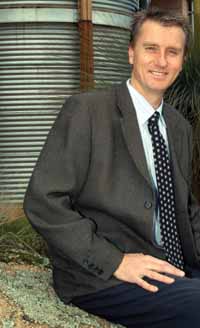Around 4 600 rural Australians die unnecessarily every year due to poorer access to health services than their metropolitan cousins, according to the Australian Institute of Health and Welfare.
 “That is three times the current annual national road toll, and it’s just not acceptable!,” says Charles Sturt University’s (CSU) Dean of the Faculty of Science, Professor Nick Klomp, who says CSU is ready to address the rural doctor shortage that contributes to this dire situation.
“That is three times the current annual national road toll, and it’s just not acceptable!,” says Charles Sturt University’s (CSU) Dean of the Faculty of Science, Professor Nick Klomp, who says CSU is ready to address the rural doctor shortage that contributes to this dire situation.“According to the Rural Doctors Association Australia, regional Australia currently has a shortfall of 1 800 rural doctors, and the number of Australian educated doctors in rural practice in Australia has declined by four per cent over the last decade.
“The National Health Workforce Taskforce estimates Australia needs 356 new medical student places per annum up to 2025 to educate around 6 000 new doctors to meet current and future national demand.
“And we can’t continue to rely on overseas trained doctors, who now make up over 40 per cent of the rural doctor population, and growing each year, because we can’t get enough locally trained doctors in regional Australia. Any further doctor shortages will impact most heavily on our rural communities unless we get more graduates to move to and stay in the regions.”
According to Professor Klomp, who appeared as a panellist on the ABC’s Q&A program on Monday 2 May, CSU already has a proven track record in providing health professionals to suit the needs and challenges of regional Australia.
"If we are going to improve health services, we need to train doctors who are committed to working in rural areas. We need to expand health and medical education in rural Australia if we are to get more rural students into those courses. It is well known that if we train rural students in the bush, they will remain in the bush to work.
"Charles Sturt University has proven this with more than 70 per cent of the University's on campus students in health science courses coming from a rural area, and more than 70 per cent of those commencing employment in rural areas, up to 90 per cent in some disciplines,” Professor Klomp said. Current CSU health courses include pharmacy, nursing, physiotherapy, occupational therapy, radiology and social work.”





Social
Explore the world of social